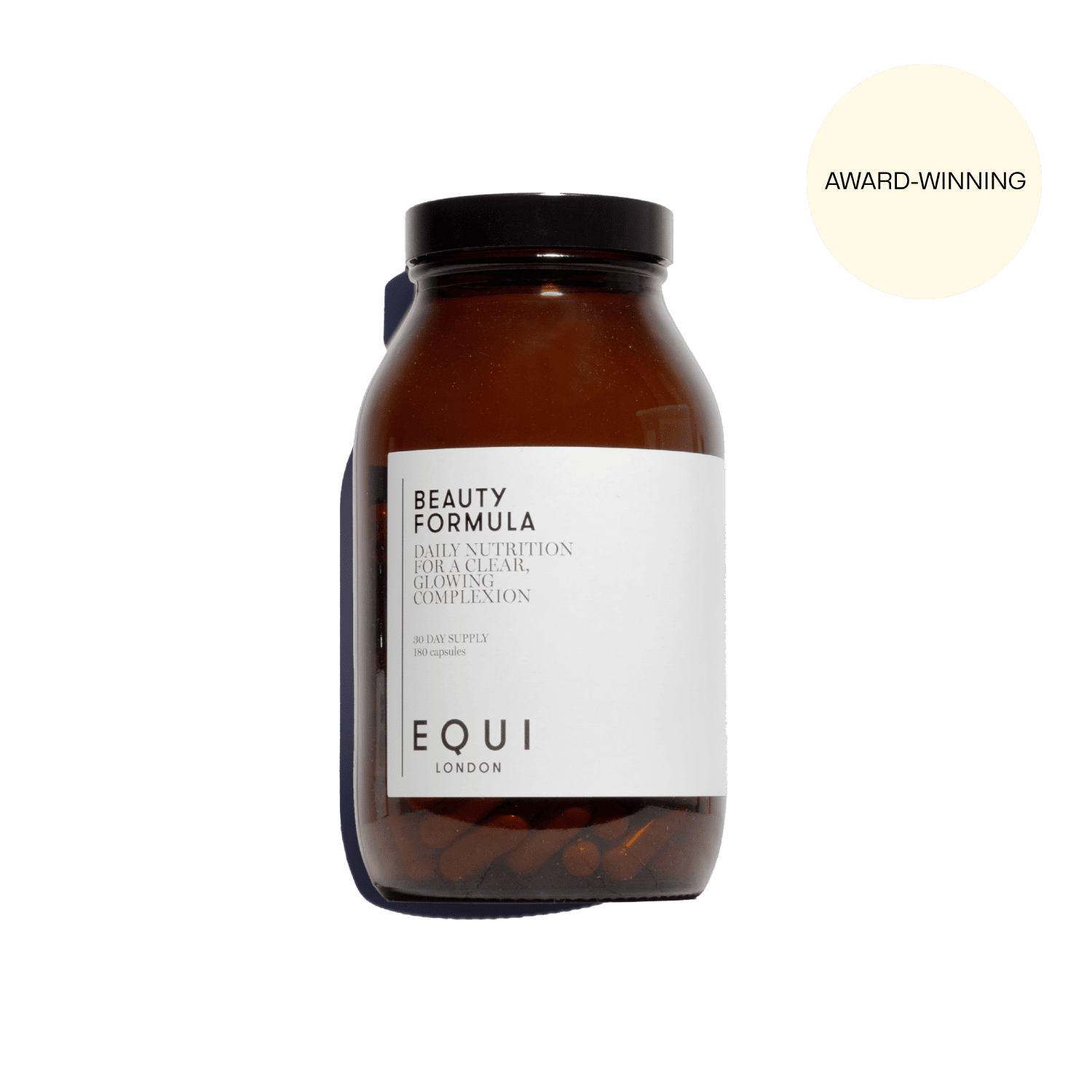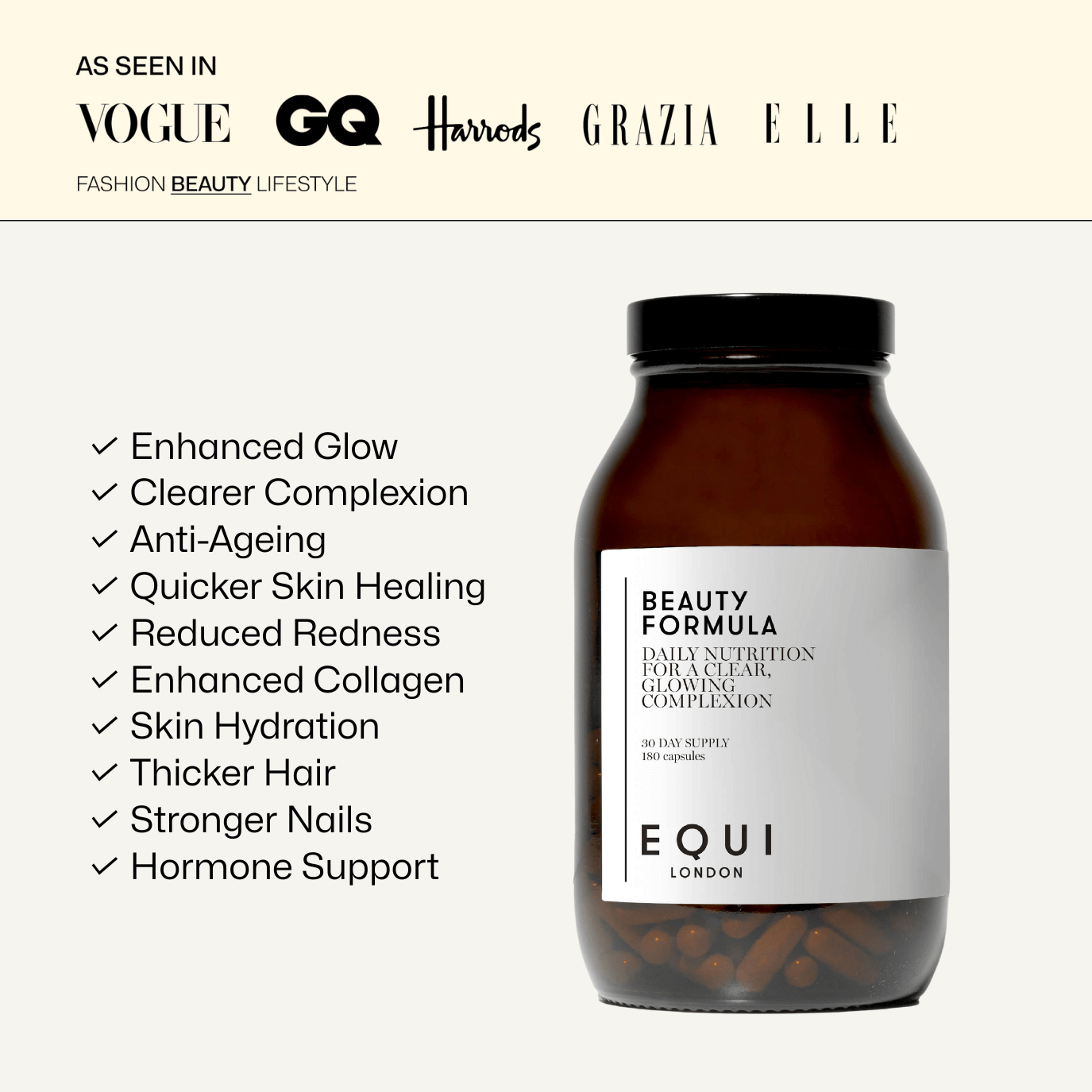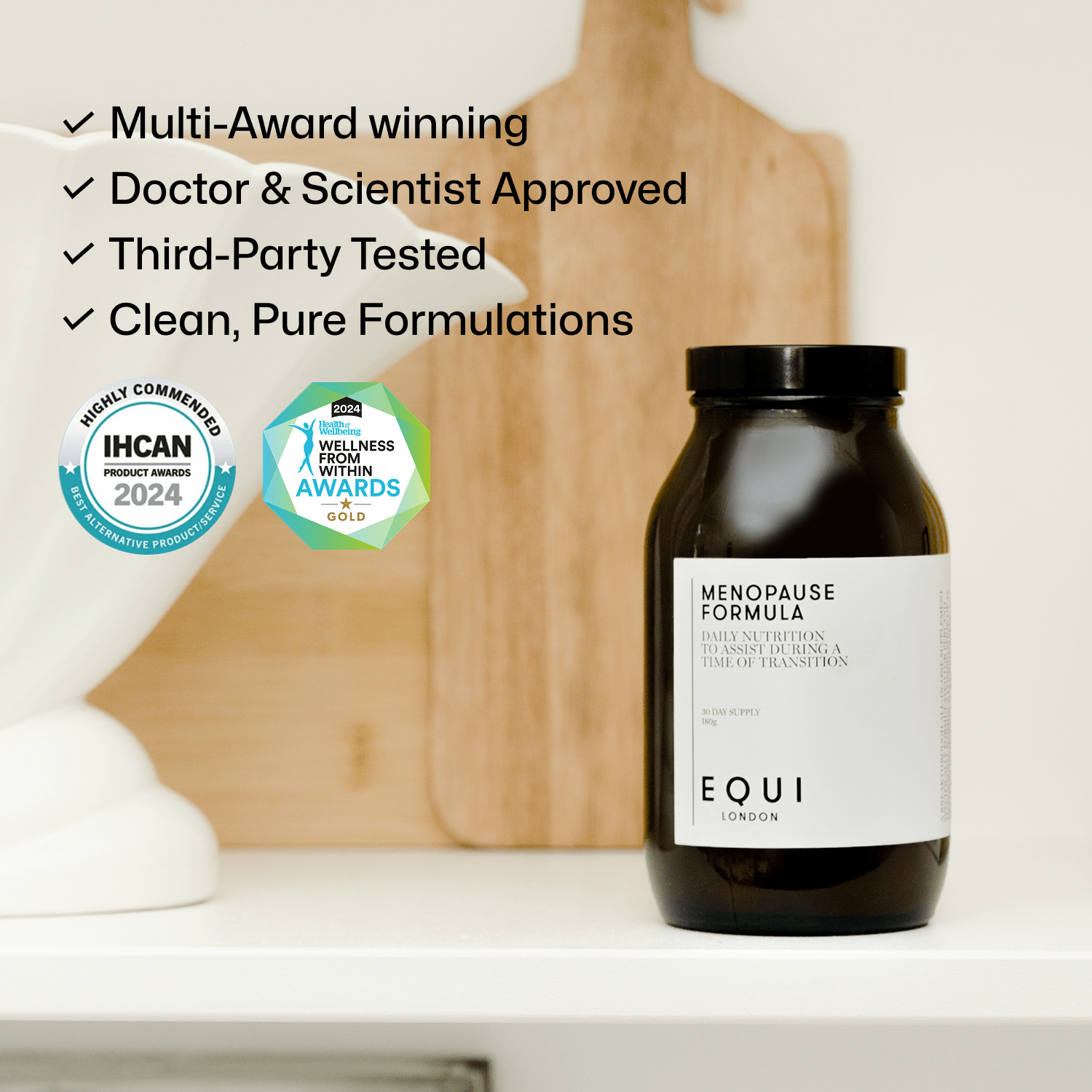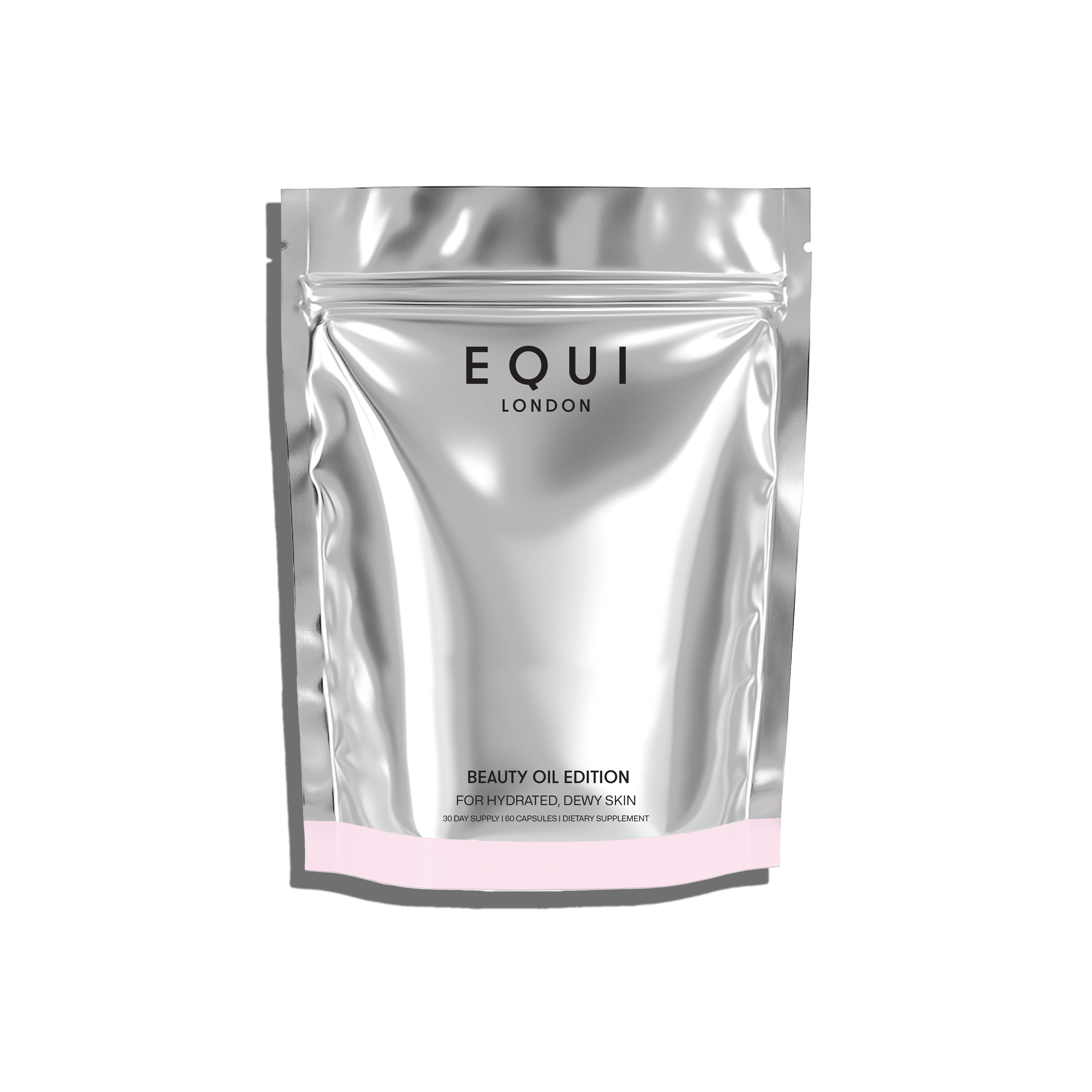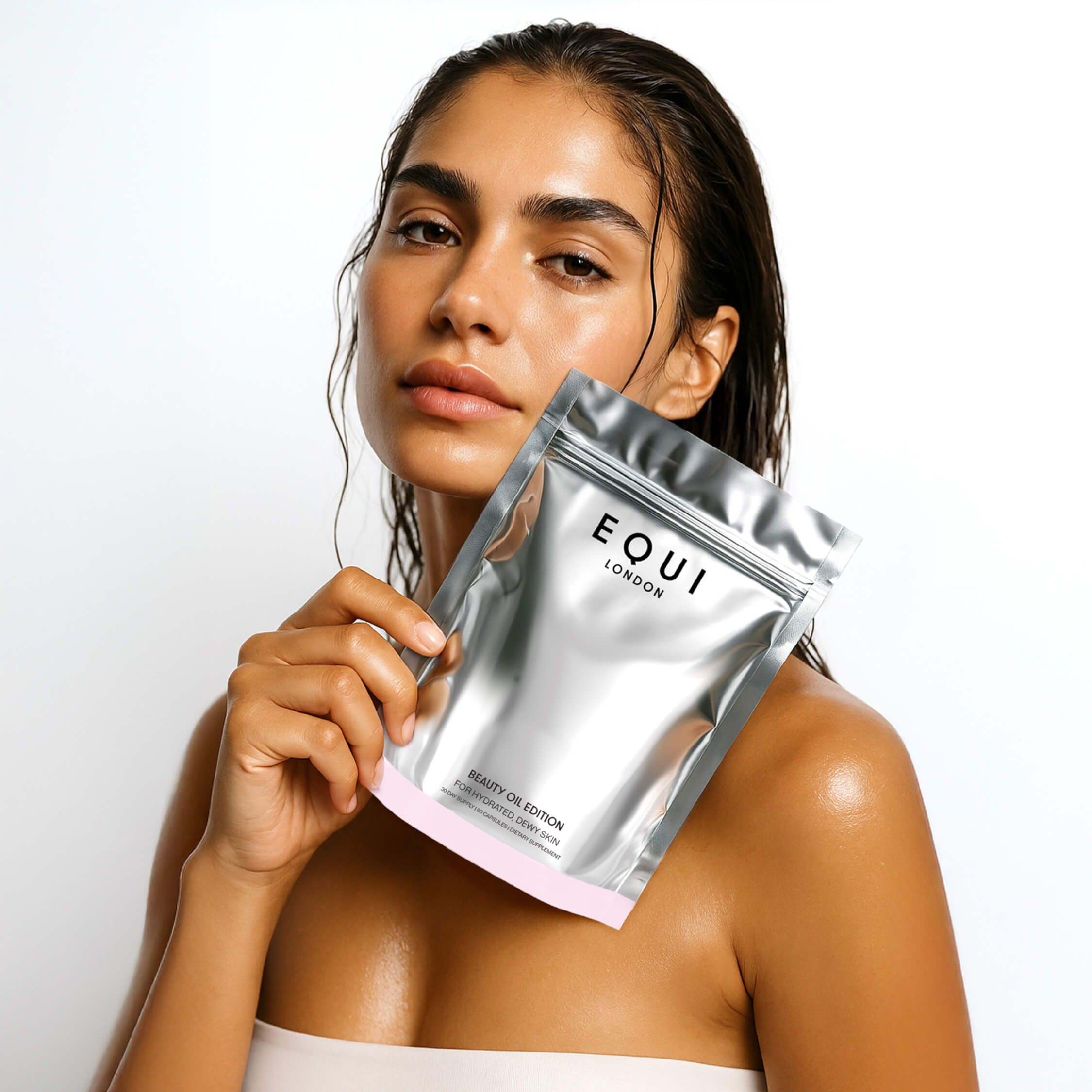As the summer season approaches, many of us find our schedules filling up with vacations and outdoor adventures to social gatherings and family events. While the summer holidays are often one of the most enjoyable and anticipated times of the year, it can also be a period of increased stress and as our co-founders Rosie and Alice know all too well, it’s a real juggle!
The desire to make the most of the summer leads to packed diaries plus the challenge of maintaining energy and health whilst working. To help you navigate this busy yet fun time of year, we’ve gathered some expert tips from Alice Mackintosh, Nutritional Therapist and Head of Science at Equi.

Alice, a co-founder of Equi, brings her clinical knowledge and experience to offer practical advice on how to stay energised, healthy, and balanced throughout the summer.
One of the best aspects of summer is the abundance of daylight, which not only lifts our spirits but also plays a crucial role in our physical health. Daylight exposure is essential for the production of vitamin D as well as for regulating our sleep wake cycle, also known as the circadian rhythm. Alice shares her insights on how to perfect your morning routine, to support optimal energy levels and sleep. Since travel is a common feature of the summer season, whether it's for a much-needed vacation or days out with the kids, we will discuss how to address common digestive issues that can crop up. Changes in diet, dehydration, and irregular schedules can all contribute to constipation. Alice shares her insights on supporting digestive health and overcoming constipation, with all her tips and tricks to tackle this issue. Maintaining a healthy diet can be challenging when traveling, especially with the temptation of indulging in local cuisines and treats. However, Alice provides practical strategies for staying on track with your nutritional goals. She also addresses blood sugar spikes, which can become prevalent during the summer holidays, with endless ice-creams and carb heavy meals. Finally, Alice offers her recommendations for travel essentials to take with you, that support health and well-being, on the go.
With her expert tips, you can enjoy the summer season to the fullest, feeling energised, healthy, and ready to tackle your busy schedule. Whether you're soaking up the sun, exploring new destinations, or simply enjoying the warmth and fun of this season, taking care of your health is key to making the most of this time of year.
Make the Most of Sunny Days
Daylight, particularly sunlight, offers many health benefits beyond just getting a tan! We all know that the exposure to sunlight plays a crucial role in the production of vitamin D, but did you know it helps the regulation of your circadian rhythm also?
Let’s look at vitamin D synthesis first which is one of the most significant benefits of sunlight exposure. Vitamin D is crucial for bone health as it facilitates the absorption of calcium and phosphorus, minerals vital for maintaining strong bones and teeth. Additionally, vitamin D supports immune function and has been linked to a reduced risk of autoimmune diseases and infections (1). It also plays a role in mood regulation, with deficiencies associated with conditions such as depression and seasonal affective disorder (SAD) (2). Another role of sunlight exposure is circadian rhythm regulation. Natural light is a primary regulator of the circadian rhythm, our body's internal clock that dictates sleep-wake cycles. Exposure to natural light helps synchronise the circadian rhythm, leading to improved sleep quality and overall health. Proper regulation of this rhythm influences hormonal balance, digestion, and cognitive function, emphasising the importance of daylight in daily life (3).
Knowing the importance of daylight exposure, we asked Alice for her morning routine tips on how to get the most out of the summer season:
“Research is emerging about the many benefits of getting daylight into our eyes within 90 minutes of waking—something that at this time of year is really easy to do. Just 5-20 minutes of daylight (ideally not through a window, and remember, no sunglasses!) has been shown to improve energy, mood, and even productivity throughout the day. It may even help us sleep better at night. Aim to limit caffeine until you’ve had these 90 minutes to maximise the benefits.”
To maximise the benefits of sunlight while minimising the risks, here are some additional tips:
Optimal Times for Sun Exposure - The best time to get sun exposure for vitamin D synthesis is midday, typically between 10 a.m. and 2 p.m., when the sun is at its highest point, and UVB rays are most intense. During this period, a brief exposure (about 10-30 minutes, depending on skin type and location) can suffice for adequate vitamin D synthesis without sunscreen (4).
Sun Protection - While moderate sun exposure is beneficial, overexposure can lead to skin damage. Beyond this 10-30 minutes of sun exposure, it is best to use sunscreen with at least SPF 30, wear protective clothing, and avoid prolonged sun exposure, especially during peak hours.
Skin Type Considerations – You do need to consider your skin type when it comes to sun exposure. For example, those with lighter skin tones synthesise vitamin D more quickly than those with darker skin, who may require longer exposure. Those with darker-skin tones are also less prone to UV-related skin damage. If you are unsure of how much exposure is right for you, opt for sunscreen and consider supplementing vitamin D year round instead.
Here are some further practical ways to incorporate more daylight exposure into your daily routine:
Morning Walks - Start your day with a brisk walk in the morning sun! This not only boosts vitamin D levels but also energises you for the day ahead. Trust it, it really works!
Outdoor Workout - If you usually exercise indoors, consider moving your workouts outside. Activities like jogging, cycling, or even yoga in the park can be refreshing and invigorating. See what’s going on in your local area or join the local park run – it will make your workout more enjoyable too!
Gardening - Gardening is a relaxing way to spend time outdoors. It provides moderate exercise and a direct connection to nature, benefiting both physical and mental health. We know that our microbiome benefits from exposure to soil, plants, and nature so it’s a win win in our books.
Al Fresco Dining & Picnics - Eating meals outside, such as having breakfast or lunch on a balcony, patio, or a picnic in the park, is an easy way to increase daylight exposure without sunbathing. We are all about habit stacking and eating outside is one of them!
Active Commutes - If possible, walk or cycle part of your commute to work or other destinations. This not only increases your exposure to sunlight but also adds physical activity to your day. If you need to get the bus or tune, try getting off 1-2 stops early and walking the rest of the way. Not only this, you will get your steps in too!
Get Ahead of Travel Constipation
Traveling, whether for leisure or business, often brings excitement and a break from routine. However, it can also disrupt regular digestive patterns, leading to constipation—a common issue faced by many of us during the summer season. Understanding the factors that contribute to travel-related constipation and adopting strategies can help maintain digestive health and comfort while on the move. Here we explore the factors which can contribute to constipation while traveling:
Changes in Diet - Traveling often involves eating different foods than usual, which can include lower fibre intake or increased consumption of processed and convenience foods. These dietary changes can slow down the digestive process and reduce bowel regularity.
Dehydration - Dehydration is a significant contributor to constipation. It can occur more easily during the summer months or with travel, especially on long flights where the cabin air is dry, or in hot climates where water loss through sweat is increased. Inadequate fluid intake can harden the stool, making it difficult to pass. Make sure you get in at least 2L of water or more if sweating.
Disruption of Daily Routines - Travel often disrupts daily schedules, including regular mealtimes and bathroom habits. The juggle of family life, kids on school holidays and working can lead to neglect of our essential routines! This disruption can affect the body's natural rhythm and lead to constipation. Additionally, the stress and anxiety associated with traveling can further exacerbate digestive issues – so many of us don’t feel comfortable going to the toilet on the go!
Staying hydrated is crucial for preventing constipation, particularly during travel. Here are some practical hydration tips:
Drink Plenty of Water - Aim to drink at least 8-10 glasses of water per day. During flights, try to drink water regularly, even if you don’t feel thirsty, as the dry cabin air and salty plane food can accelerate dehydration. Take a re-fillable water bottle with you as you can often find water fountains in the airport. When out and about, always take your own water with you as you will be much more likely to stay hydrated than if you need to pick up a bottle on the go. You can be sipping on this when on day trips with the kids or during long travel days.
Avoid Dehydrating Drinks – As tempting as a glass of rosé is in the summer, limit the intake of alcohol and any caffeinated drinks, such as coffee and fizzy drinks, as these can have diuretic effects, increasing fluid loss. If you do drink one too many, make sure you have a glass of water per drink to stay hydrated and even consider electrolytes to replenish any lost minerals.
Consume Hydrating Foods - Incorporate foods with high water content into your diet, such as fruits like watermelon or oranges and vegetables like cucumbers and tomatoes. Add watermelon to salads and make crudites with cucumbers and tomatoes to accompany any dips.
We also asked Alice for her top tips when it comes to travel constipation – here’s what she had to say:
“Many of my clients complain about this - it can really put a dampener on things and leave you feeling uncomfortable and bloated. It's largely down to early flights, time zones changing and less fibre.”
- An apple per day - you can pretty much always find one and the fibre and pectin in the skin is fantastic for keeping the gut moving.
- Kiwi is even better if you can find it, x2 per day really helps gut function and it’s also a great skin food.
- Make time each morning to go to the loo - ideally after a warm drink or your breakfast. The gut is a very habitual organ, and if you give it time and feel relaxed, you're more likely to go. If you hold it in, it will only make the constipation worse.
- Put some chia or flaxseed into a container and bring in your suitcase. This one is great and you an add 1 TBSP to your breakfast each day - this is low FODMAP so wont bloat for anyone who struggles with this, and it’s fantastic for keeping the gut regular.
- Try some acupressure points for constipation - you can find these online.
Travel-related constipation can be an uncomfortable and inconvenient problem, but it is largely preventable with the right strategies. Staying hydrated, maintaining a high-fibre diet, and being mindful of your body's signals can help keep your digestive system functioning smoothly while on the go. By planning ahead and making conscious choices, you can enjoy your travels without the discomfort of digestive issues!
Staying on Track with Nutritional Goals
Summer often brings a welcome change in routine, with holidays, summer parties, and potentially more dining out. While these experiences are fun, they can also present challenges to maintaining nutritional goals. However, with some planning and mindful practices, it's possible to stay on track and enjoy the summer season without compromising health. Here are some strategies for eating a diverse range of plant-based foods, making healthier choices when dining out, and practicing mindful eating.
We asked Alice how we can stay on top of nutritional goals in the summer. Here’s what she had to say:
“It’s widely known that we need to eat more plants, with most of these coming from veggies. To really double down on this, try to mix it up and get at least one food from each of the following groups of plants: fruit, vegetables, lentils/beans, grains, nuts, seeds, spices, herbs, and fermented veggies. This means you get more types of fibre as well as vitamins, minerals, phytoestrogens, prebiotics, and antioxidants—energy and goodness for the whole body no matter what your age.”
Eating a variety of plant-based foods is key to a healthy diet, providing essential nutrients, fibre, and phytochemicals that support overall health. The concept of ‘eating 30 plants per week’ encourages dietary diversity, which has been shown to promote a healthier gut microbiome and reduce the risk of chronic diseases (5). Here are some additional ways to incorporate more plants into your diet:
Meal Planning - Plan meals around different vegetables, fruits, legumes, nuts, seeds, and whole grains. This ensures a variety of nutrients and helps achieve the 30-plant goal. Have a look at your basket and ensure you have different coloured veg and fruits and different varieties.
Experiment with New Foods - Use the summer as an opportunity to try new seasonal fruits and vegetables. Farmers' markets are excellent places to find fresh, locally grown produce. Order a veg box which will encourage you to try new veg too and usually will be whats in season too.
Include Plants in Every Meal - Add vegetables to breakfast (e.g., spinach and berries in smoothies or mushrooms, greens, and pepper in omelettes/frittatas), incorporate salads or vegetable sides at lunch, and ensure dinner includes a variety of vegetables. Aim for 2-3 veg per meal ideally.
Snacking on Plants - Choose fruits, nuts, or vegetable sticks for snacks. These options are not only nutritious but also convenient for travel or busy days. It’s all about the meal prepping with these though so get organised and pre some snacks for the week ahead too.
Ok, so you have nailed the 30 plants per week, yet dining out can be challenging when trying to maintain this. However, with mindful choices, it's possible to enjoy meals out without compromising nutritional goals. Here’s how you can make healthier choices:
Opt for Fresh Vegetables and Salads as Starters or Sides - Start meals with a salad or go for a vegetable-based side rather than fries. This not only provides fibre but can also help control hunger and blood sugar balance.
Choose Lean Proteins - Select dishes with lean proteins such as chicken, fish, or legumes. These options are generally lower in saturated fats and may be healthier too.
Whole Grains Over Refined - When available, choose whole grain options such as brown rice, quinoa, or whole wheat bread, which offer more nutrients and fibre than their white refined counterparts.
Portion Control - Restaurants often serve large portions. Consider sharing a dish, taking leftovers home, or asking for smaller portions to avoid overeating. If you do fancy a dessert, share this so you can half the indulgence without avoiding completely!
Limit Processed and High-Calorie Foods - Avoid dishes that are deep-fried or smothered in heavy sauces. Opt for grilled, steamed, or baked options wherever possible. If you do fancy fried, why not go for the grilled chicken salad as your main rather than the burger – a little of what you fancy does you good sometimes but try to balance this with better choices elsewhere.
Finally, mindful eating involves paying full attention to the eating experience, helping to avoid overeating and enhancing the enjoyment of food. It encourages listening to hunger and fullness cues, which can prevent the common pitfall of eating out of habit or stress. Here’s how to practice mindful eating:
Eat Slowly - Take time to chew thoroughly and savour each bite. This not only aids digestion but also allows time for the brain to register fullness, reducing the likelihood of overeating (6). Aim for about 15-20 chews per bite!
Avoid Distractions - Eating without distractions, such as watching TV or using a smartphone, can help focus on the meal and the body's hunger signals. Enjoy mealtimes with the whole family during the longer summer days. Sit at a dining table and enjoy the social aspect of mealtimes.
Reflect on Hunger and Fullness - Before eating, assess your hunger level and then after eating, take a moment to gauge your fullness. Allow at least 20 minutes to ensure that your food has fully reached your stomach. This practice helps align eating with actual hunger rather than external cues or distractions!
Enjoy the Experience - Focus on the flavours, textures, and aromas of the food. Enjoying the sensory experience can increase satisfaction and reduce the desire to overeat. It really does help to make your own meals rather than relying on outing out or takeout’s as the simple act of cooking a meal really stimulates the senses and your digestive function.
Reduce Blood Sugar Spikes
Summer holidays often bring a host of delicious yet not so healthy foods, from ice creams to carb-heavy meals enjoyed during holidays. While indulging occasionally is part of enjoying the season, consistently high intake of sugary and starchy foods can lead to blood sugar spikes. These spikes not only contribute to weight gain but also result in energy crashes that prompt further sugar cravings. Alice Mackintosh emphasises the importance of managing blood sugar levels during this time. One practical tip she offers is to consider the order in which foods are consumed during meals. Here's what she had to say:
“You might well have heard that when eating a meal, the order you eat your food in can make a difference to how your blood sugar is affected by that food. This is important because a spike in blood sugar can lead to a higher propensity to gain weight (often around the middle!) and a bigger crash afterwards, often making you reach for more sugary foods.
Exactly how your blood sugar is affected by what you eat will be dependent on you and many other factors. However, this is a little hack that might make a discernible difference when you’re eating higher carb foods like pasta, bread, and chips over the summer months, often in restaurants.
The trick is to try and get some greens on the plate, and always eat these first. Even if you follow this with a higher carb dish - such as pasta, the effect on your blood sugar might be better - worth a shot we’d say.”
So, what’s the science behind this? Recent research suggests that the order in which food is eaten can significantly impact postprandial (after eating) blood glucose levels. Consuming vegetables or proteins before carbohydrates can help mitigate the blood sugar spike typically associated with high-carb foods. This occurs because fibre, protein, and fats slow gastric emptying and carbohydrate absorption, leading to a more gradual increase in blood glucose levels (7). As Alice suggests, starting a meal with a salad or a portion of leafy greens can prepare the digestive system and reduce the glycaemic response when carbohydrates are consumed later in the meal. The fibres in greens act as a physical barrier, slowing the absorption of sugars into the bloodstream. Additionally, proteins and fats stimulate the secretion of incretins, hormones that enhance insulin secretion and help regulate blood glucose levels.
To enjoy summer treats without experiencing significant blood sugar spikes, consider the following strategies:
Include Vegetables in Every Meal – As Alice’s advice, always aim to start meals with non-starchy vegetables or salads. This not only helps manage blood sugar levels but also ensures you are consuming sufficient fibre and micronutrients.
Pair Carbs with Protein and Fat - Whenever possible, pair carbohydrates with protein and healthy fats. For example, if you're having bread, add some avocado or cheese. This combination can help slow down the digestion and absorption of sugars.
Opt for Whole Grains - Choose whole-grain versions of bread, pasta, and rice instead of white/refined ones. Whole grains have a lower glycaemic index, meaning they cause a slower, more sustained release of glucose into the bloodstream.
Moderate Portion Sizes - Be mindful of portion sizes, especially when indulging in high-carb or sugary foods. Smaller portions can reduce the glycaemic load and help maintain blood sugar control.
Stay Hydrated - Sometimes, thirst can be mistaken for hunger, leading to unnecessary snacking. Drinking water throughout the day can help prevent this and reduce the likelihood of reaching for sugary snacks.
Travel Essentials - What to Pack for Maintaining Health
Traveling often disrupts daily routines, making it challenging to maintain healthy eating and wellbeing habits. However, with careful planning and the right travel essentials, you can support your health and well-being on the go. We asked Alice for her top tips for staying on top of health when travelling:
“Pack an all in one, easy product! Your body can really benefit from supplementation whilst you’re away, especially as you may not be as control of your diet, possibly drinking more alcohol and spending hours in airports (has anyone had a flight be on time since 2019?! Us neither). This time of year, there is often more socialising, which can put strain on the liver. Supplements really help here, but obviously we don’t want to be pill popping or taking up valuable suitcase space with supplements. Equi is perfect because whichever Formula is best suited to you contains 10 supplements in 1, meaning one easy daily product and you're done, knowing your body has a strong nutrition foundation. Having spent the last decade working with people one-to-one and seeing what works, whilst also reading the latest science, I meticulously formulate each product so that you feel the difference when you take them. Whether it’s for your energy, digestion, hormones, skin, or to support your body when you're really busy, take this 30 second quiz to find out which Equi Formula is best for you.”
Disclaimer: All of the information on this website is provided for general information only, it should not be treated as a substitute for the medical advice of your own doctor or any other health care professional providing personalised nutrition or lifestyle advice. If you have any concerns about your general health, you should contact your local health care provider. No one diet or supplement regime works for everyone and you should always seek help from a GP and registered health expert before making changes to your diet, or before introducing any supplements. This is especially important when pregnant.
References
- Holick, M. F. (2007). Vitamin D deficiency. New England Journal of Medicine, 357(3), pp. 266-281.
- Lam, R. W., Levitt, A. J., Levitan, R. D., Enns, M. W., Morehouse, R., Michalak, E. E., & Tam, E. M. (2006). The CAN-SAD study: a randomized controlled trial of the effectiveness of light therapy and fluoxetine in patients with winter seasonal affective disorder. American Journal of Psychiatry, 163(5), 805-812.
- Czeisler, C. A., & Gooley, J. J. (2007). Sleep and circadian rhythms in humans. Cold Spring Harbor Symposia on Quantitative Biology, 72, 579-597.
- Holick, M. F. (2007). Vitamin D deficiency. New England Journal of Medicine, 357(3), pp. 266-281.
- Heiman, M. L., & Greenway, F. L. (2016). A healthy gastrointestinal microbiome is dependent on dietary diversity. Molecular Metabolism, 5(5), 317-320.
- Robinson, E., Aveyard, P., Daley, A., Jolly, K., Lewis, A., Lycett, D., ... & Higgs, S. (2013). Eating attentively: a systematic review and meta-analysis of the effect of food intake memory and awareness on eating. The American Journal of Clinical Nutrition, 97(4), 728-742.
- Shukla, A. P., Iliescu, R. G., Thomas, C. E., & Aronne, L. J. (2015). Food order has a significant impact on postprandial glucose and insulin levels. Diabetes Care, 38(7), e98-e99.
